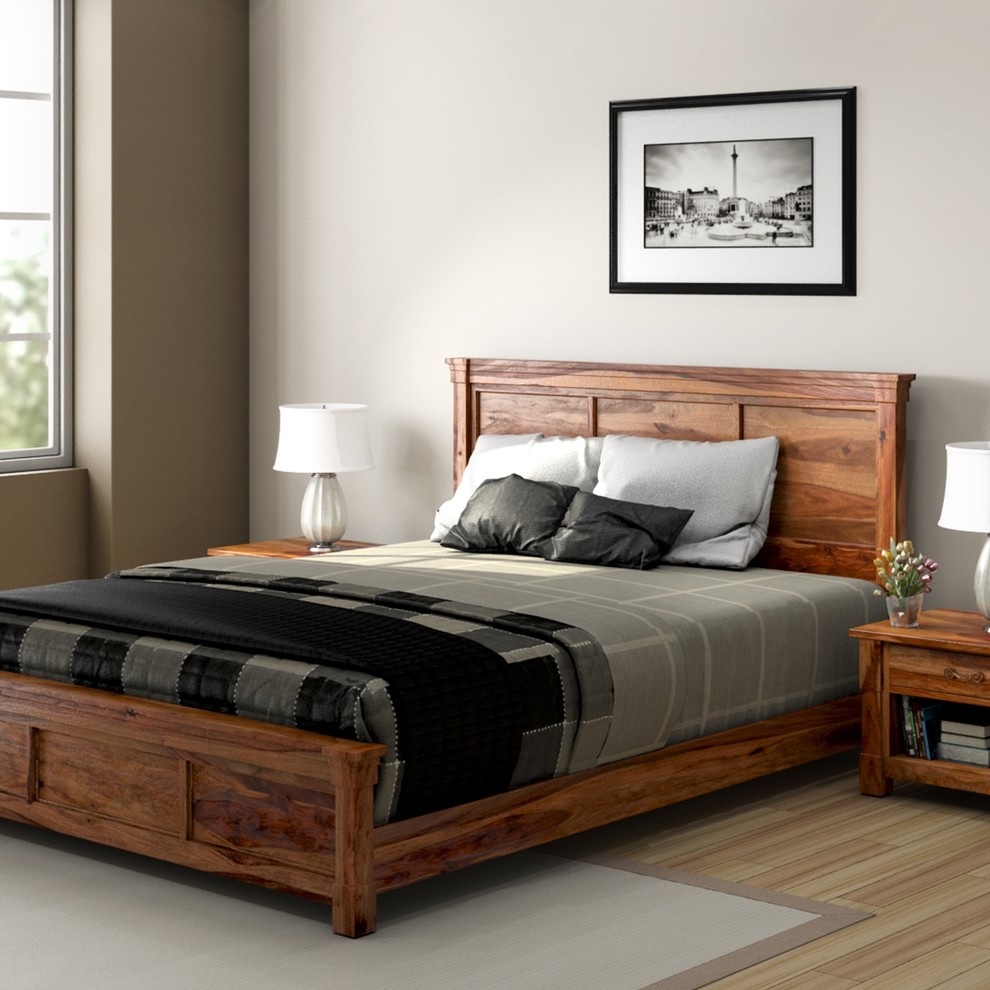HOME IMPROVEMENT
Wood for Nightstand: Choosing the Perfect Material

Selecting the right wood for a nightstand is crucial for both functionality and aesthetics. The material influences the piece’s durability, appearance, and how it complements your bedroom decor. This guide delves into various wood types, highlighting their characteristics to help you make an informed choice.
Understanding Wood Types
Wood is broadly categorized into hardwoods and softwoods, each with distinct properties:
-
Hardwoods: Derived from deciduous trees, they are generally denser and more durable.
-
Softwoods: Sourced from coniferous trees, they are lighter and often more affordable.
For nightstands, hardwoods are typically preferred due to their strength and longevity.
Top Wood Choices for Nightstands
1. Oak
Oak is renowned for its strength and prominent grain patterns. Available in red and white varieties, it offers a classic look that suits various styles. Its durability ensures the nightstand withstands daily use.
2. Walnut
Walnut boasts a rich, dark hue with a smooth grain, exuding elegance. It’s a durable hardwood that resists wear, making it ideal for furniture pieces like nightstands.
3. Maple
Maple is a light-colored hardwood with a subtle grain, offering a clean and modern appearance. Its hardness makes it resistant to dents and scratches, ensuring longevity.
4. Cherry
Cherry wood starts with a light pinkish tone that deepens over time to a rich reddish-brown. Its smooth grain and warm color add sophistication to any bedroom.
5. Mahogany
Mahogany is prized for its deep, reddish-brown color and straight grain. It’s a stable hardwood that resists swelling and shrinking, maintaining its form over time.
6. Pine
Pine is a softwood that’s lightweight and easy to work with. Its pale color and knots give a rustic charm, though it’s more susceptible to dents compared to hardwoods.
7. Acacia
Acacia wood features varied grain patterns and a warm tone. It’s a durable hardwood that’s resistant to water and scratches, making it suitable for furniture.
Factors to Consider When Choosing Wood
Durability
Consider how much wear the nightstand will endure. Hardwoods like oak and maple offer high durability, suitable for frequent use.
Aesthetic Appeal
The wood’s color and grain should complement your bedroom decor. For instance, walnut provides a luxurious feel, while pine offers a cozy, rustic look.
Maintenance
Some woods require more upkeep. For example, mahogany may need regular polishing to maintain its luster, whereas maple is relatively low-maintenance.
Budget
Hardwoods are generally more expensive than softwoods. Determine your budget and balance it with the desired quality and appearance.
Sustainability and Environmental Impact
Opting for sustainably sourced wood ensures environmental responsibility. Look for certifications like FSC (Forest Stewardship Council) to guarantee the wood is harvested responsibly.
Also read: PowerPoint Night Ideas That Are Hilarious & Memorable
Conclusion
Choosing the right wood for your nightstand involves balancing durability, aesthetics, maintenance, and budget. Hardwoods like oak, walnut, and maple offer longevity and timeless appeal, while softwoods like pine provide affordability and a rustic charm. By considering these factors, you can select a nightstand that enhances your bedroom’s functionality and style.
FAQs
What is the most durable wood for a nightstand?
Hardwoods like oak and maple are among the most durable options, resisting wear and maintaining their appearance over time.
Which wood offers a luxurious look for nightstands?
Walnut and mahogany provide rich tones and smooth grains, adding a touch of luxury to bedroom furniture.
Are softwoods suitable for nightstands?
Yes, softwoods like pine can be used for nightstands, especially if you’re aiming for a rustic aesthetic. However, they may be more prone to dents and scratches.
How does wood choice affect maintenance?
Some woods require more care; for instance, mahogany may need regular polishing, while maple is relatively easy to maintain.
Is sustainably sourced wood important?
Yes, choosing wood with certifications like FSC ensures environmental responsibility and supports sustainable forestry practices.

-

 EDUCATION3 months ago
EDUCATION3 months agoFree Cover Letter Generator: Build Job-Winning Letters in Minutes
-

 GUIDE3 months ago
GUIDE3 months agoBenefits of Online Personal Training for Fitness Success
-

 BUSINESS2 months ago
BUSINESS2 months agoGrow Your Audience with USA Instagram Followers
-

 TECH2 months ago
TECH2 months agoFreedom Forever Solar Reviews Explain How Conversational Intelligence Turns Customer Interactions into Insights